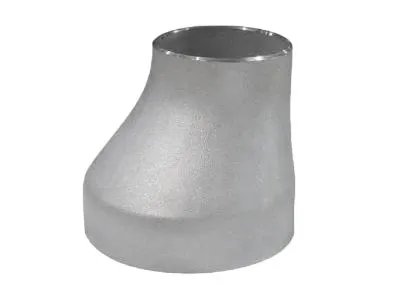-
Cangzhou Yulong Steel Co., Ltd.
-
Phone:
+86 13303177267 -
Email:
admin@ylsteelfittings.com
- English
- Arabic
- Italian
- Spanish
- Portuguese
- German
- kazakh
- Persian
- Greek
- French
- Russian
- Polish
- Thai
- Indonesian
- Vietnamese
- Zulu
- Korean
- Uzbek
- Hindi
- Serbian
- Malay
- Ukrainian
- Gujarati
- Haitian Creole
- hausa
- hawaiian
- Hebrew
- Miao
- Hungarian
- Icelandic
- igbo
- irish
- Japanese
- Javanese
- Kannada
- Khmer
- Rwandese
- Afrikaans
- Albanian
- Amharic
- Armenian
- Azerbaijani
- Basque
- Belarusian
- Bengali
- Bosnian
- Bulgarian
- Catalan
- Cebuano
- China
- China (Taiwan)
- Corsican
- Croatian
- Czech
- Danish
- Esperanto
- Estonian
- Finnish
- Frisian
- Galician
- Georgian
- Kurdish
- Kyrgyz
- Lao
- Latin
- Latvian
- Lithuanian
- Luxembourgish
- Macedonian
- Malgashi
- Malayalam
- Maltese
- Maori
- Marathi
- Mongolian
- Myanmar
- Nepali
- Norwegian
- Norwegian
- Occitan
- Pashto
- Dutch
- Punjabi
- Romanian
- Samoan
- Scottish Gaelic
- Sesotho
- Shona
- Sindhi
- Sinhala
- Slovak
- Slovenian
- Somali
- Sundanese
- Swahili
- Swedish
- Tagalog
- Tajik
- Tamil
- Tatar
- Telugu
- Turkish
- Turkmen
- Urdu
- Uighur
- Welsh
- Bantu
- Yiddish
- Yoruba

Oct . 13, 2024 08:24 Back to list
weld tube fittings
Understanding Weld Tube Fittings An Essential Component for Fluid Systems
Weld tube fittings are crucial components widely used in various industries, particularly in fluid and gas transfer systems. These fittings provide a seamless connection between different tubes or pipes, ensuring a leak-free and secure pathway for fluids under varying pressures. Their design typically accommodates a range of tube diameters, making them versatile for numerous applications.
One of the primary advantages of weld tube fittings is their robustness. Unlike threaded or glued fittings, weld fittings are fused together, creating a continuous metal joint that can withstand higher pressures and temperatures. This characteristic makes them an excellent choice for demanding environments such as oil and gas production, chemical processing, and high-heat applications.
Types of Weld Tube Fittings
Weld tube fittings come in various types, each serving specific purposes. Common types include straight connectors, elbows, tees, and reducers. Straight connectors allow for the direct connection of two tubes, while elbows change the direction of flow, typically at a 90-degree angle. Tees enable branching out of the pipework, facilitating multi-directional flows, whereas reducers are designed to connect tubes of differing diameters, allowing for a smooth transition in flow sizes.
Materials and Standards
weld tube fittings

These fittings are manufactured from various materials, including stainless steel, carbon steel, and alloys, depending on the application's requirements. Stainless steel fittings are particularly favored for their corrosion resistance, durability, and ability to maintain hygiene, making them ideal for food and pharmaceutical applications. Additionally, weld tube fittings must adhere to specific industry standards such as ASTM, ASME, and ANSI to ensure safety and reliability.
Installation and Maintenance
Proper installation is crucial for the effective performance of weld tube fittings. The welding process should be carried out by skilled professionals to ensure the integrity of the joint. In addition, regular maintenance plays a significant role in the longevity of these fittings. Regular inspections for signs of corrosion, wear, or leakage are essential to prevent system failures.
Conclusion
In summary, weld tube fittings are indispensable components in fluid and gas transfer systems, providing secure and durable connections. Their various types and materials cater to a wide range of applications, making them suitable for both industrial and commercial use. Understanding their features, installation procedures, and maintenance is crucial for ensuring efficiency and safety in any piping system. The reliability of weld tube fittings continues to make them a preferred choice in various engineering fields.
Latest news
-
ANSI 150P SS304 SO FLANGE
NewsFeb.14,2025
-
ASTM A333GR6 STEEL PIPE
NewsJan.20,2025
-
ANSI B16.5 WELDING NECK FLANGE
NewsJan.15,2026
-
ANSI B16.5 SLIP-ON FLANGE
NewsApr.19,2024
-
SABS 1123 FLANGE
NewsJan.15,2025
-
DIN86044 PLATE FLANGE
NewsApr.19,2024
-
DIN2527 BLIND FLANGE
NewsApr.12,2024
-
JIS B2311 Butt-Welding Fittings LR/SR 45°/90° /180°Seamless/Weld
NewsApr.23,2024











